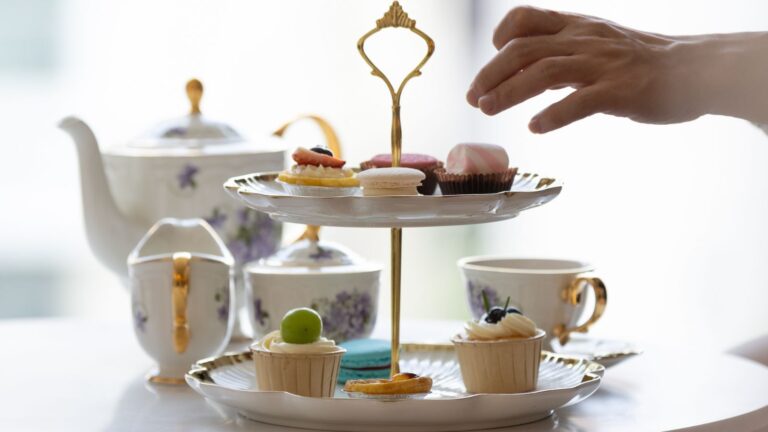Afternoon tea is a quintessentially British tradition, offering a delightful way to enjoy a light meal with friends or family. Whether you’re attending a formal tea event or hosting one at home, it’s important to know the customs and etiquette that go along with this elegant affair. Here’s what you need to know to make the most of your afternoon tea experience.
The Dress Code
While afternoon tea can range from casual to formal, it’s generally considered a smart occasion. If you’re attending a traditional afternoon tea at a high-end venue, it’s best to dress smartly. For women, a nice dress or a blouse with a skirt or trousers works well, while men should opt for smart casual attire—think a collared shirt and trousers.
Avoid overly casual clothing like jeans, trainers, or T-shirts, as afternoon tea is typically a more refined occasion.
The Table Setting
When you sit down for afternoon tea, you’ll likely see an array of utensils, plates, and cups neatly arranged in front of you. Understanding the table setting is key. The small plate in front of you is for your scones and pastries, while the teacup and saucer are placed to the right. The teaspoon rests on the saucer, ready to stir your tea.
Napkins should be placed on your lap when you sit down. If you need to leave the table, place the napkin on your chair, not on the table.
How to Serve Tea
When the tea arrives, it’s traditional for the host to serve their guests before pouring their own cup. If you’re the guest, allow your host to pour the tea for you. It’s important to note that loose leaf tea is often served with a strainer, which should be placed over your cup before pouring.
Once your tea is poured, add milk or lemon if you wish—but never both. If you prefer milk, pour it in after the tea, not before, as this allows the host to judge the strength of the brew.
Stirring the Tea
Proper etiquette extends to how you stir your tea. Avoid swirling the spoon around in circles. Instead, gently move the spoon back and forth in a straight line from 12 o’clock to 6 o’clock. This prevents unnecessary noise and keeps your tea from splashing over the rim. When finished, place the spoon back on the saucer, not in the cup.
Eating the Scones
Scones are a key part of any afternoon tea, and there’s a specific way to enjoy them. First, break the scone in half with your hands—don’t use a knife to cut it. Then, use a small knife to spread clotted cream and jam on each half. In terms of order, it’s up to personal preference, though there’s often a friendly debate about whether the cream or jam should go on first!
Remember to take small bites and avoid eating the scone like a sandwich.
Finger Sandwiches and Pastries
Finger sandwiches, typically served with fillings like cucumber, egg and cress, or smoked salmon, should be eaten with your hands, not cutlery. These are small and manageable, so there’s no need for a knife and fork.
When it comes to the pastries and cakes, take small, delicate bites and avoid overindulging too quickly. Afternoon tea is meant to be savoured slowly.
Mind Your Manners
As with any formal dining experience, good manners are essential. Chew with your mouth closed, avoid slurping your tea, and don’t speak with your mouth full. Afternoon tea is a social occasion, so engage in polite conversation with those around you.
Finally, when you’ve finished, gently place your napkin on the table to signal the end of the meal.
If you enjoyed this post, please give Candid Joy a follow on MSN.

